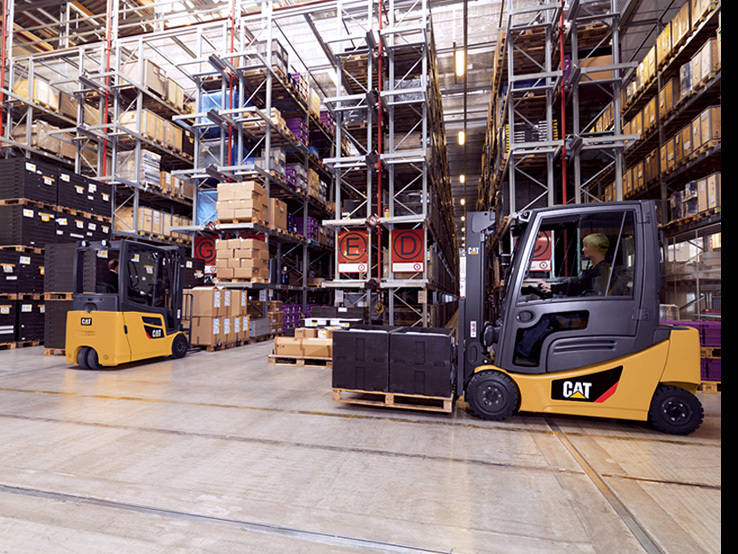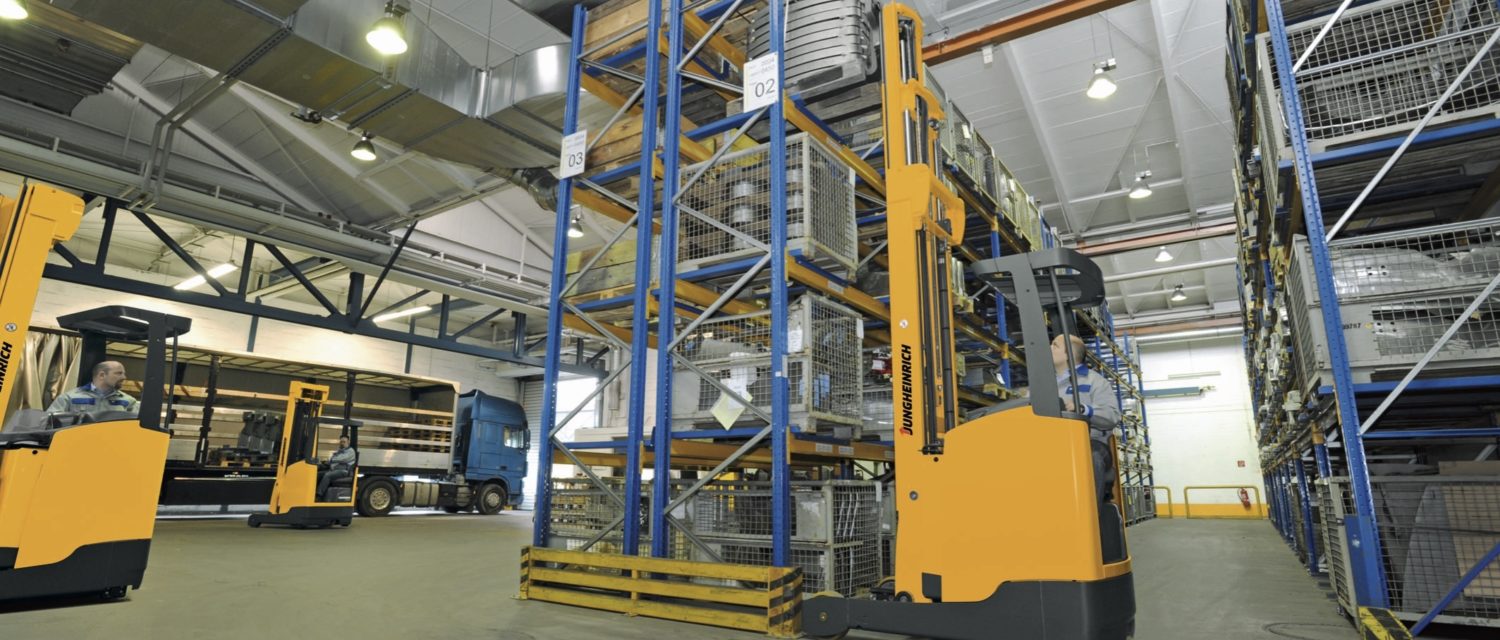Industry Innovations Improve Lift Truck Safety

At Darr, our focus is not only on providing high quality machines to customers, and offering skilled support for customers who need assistance with lift truck repair and maintenance, but also on helping customers and employees enjoy a safer environment for the use of their forklifts. That’s why we love learning about new innovations in the industry that improve quality and safety and take advantage of advances in technology.
Here are some of the recent industry innovations that we find intriguing.
[CUTOFF]Virtual reality training prepares employees for safer lift truck operation.
Virtual reality training allows operators to practice their skills in an environment that looks and feels real without any danger to themselves or those around them. Kalmar recently introduced its Kalmar in a Box experience (kalmarglobal.com). This technology creates a way to give operators a hands-on experience that goes beyond reading books and learning theories so they can confidently go on to use a lift truck in a warehouse, or other work environment, with the confidence and skill that comes from experience.
At the same time, virtual reality training, because it does not involve the actual use of a forklift in a work environment, avoids any danger of accidents caused by inexperienced or inattentive operators of this sometimes very complex equipment. Mistakes become opportunities to learn instead of incidents that lead to serious injury or damage to a valuable machine. This training also frees up real machines to be used within the work environment instead of being tied up in training exercises.
As a result, trainees enjoy learning how to operate industrial equipment in a process that is both effective and safe.
Automated guided vehicles complete simple tasks without using human resources.
People will always be needed within the warehouse to complete complicated tasks and ensure the safe operation of all lift trucks and industrial equipment. However, for businesses looking to streamline their operations and reduce human error on simple tasks, automated guided vehicles may provide a solution that is both effective and safety conscious.
These vehicles, also called AGVs, run on tracks embedded in the warehouse floor, and complete simple, automated tasks, such as carrying loads around the warehouse or engaging in certain picking tasks. For example, Jungheinrich offers a number of guided systems, including systems that can switch between manual, semiautomatic and automatic, and systems and automated pallet movers intended to simplify certain warehouse tasks.
This type of robotic machine can free up human workers to complete tasks that are beyond the scope of fully automated machines. At the same time, AGVs improve safety around the warehouse in a number of ways. For example, they often have built-in sensors and lasers that can detect obstructions in their path. In addition, they reduce the number of people who must be involved in the warehouse (and thereby reduce human error and the number of people who may potentially be hurt in a warehouse accident).
While certainly not a replacement for human workers, AGVs may, in many cases, provide a technological solution to certain practical and safety issues within the warehouse.
Warning systems make it safer to operate and repair lift trucks.
Even machines that are not fully automated can now provide warnings when collisions are about to happen, thanks to the development of systems designed to keep workers and drivers safe. For example, some forklifts shine a bright spotlight on the ground as a way to alert pedestrians to the presence of the machine whenever it senses motion in front of or behind it. Similarly, machines may set off alarms if they detect an obstacle in their path.
Other elements of these warning systems may include emergency buttons to immediately bring the lift truck to a halt if the driver sees danger, pedestrian tags that are readable by the lift truck to prevent collisions, and blinking lights to indicate when the lift truck is about to turn a corner or enter a blind spot in order to warn people in the vicinity to stay out of the way.
These warning systems can help to compensate for times when drivers may be momentarily distracted or when unexpected problems arise (such as a worker stepping into the forklift’s path). As a result, they can prevent major accidents and serious injuries during the operation of the lift truck, creating a safer environment for everyone in the work zone.
Lift truck monitors allow employers to keep a data-rich eye on their machines.
Finally, lift truck monitors may enable employers to keep track of the condition, performance, and location of any of their forklifts at any time. These wireless devices can provide location information, as well as important data, such as the lift truck’s general condition and any need for lift truck maintenance and repair. As a result, employers can avoid major problems by detecting and addressing minor problems early.
In addition, these monitoring systems can alert employers to times when employees may be driving unsafely (such as by exceeding safe speeds). This feature allows employers to identify times when additional training is required to ensure the safe operation of the machines.
The adoption of industry innovations, from virtual reality training to lift truck monitors, can help employers to improve the safe operation of their lift trucks. With the right machines, safety features, and training, you can create a safe environment for operating your lift trucks, thereby reducing damage, injuries, and accidents in the workplace. Even with just these few examples, it is exciting to witness a glimpse of the future of the forklift industry.
